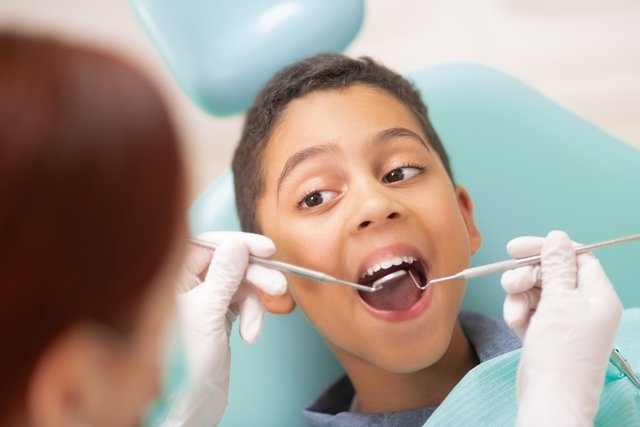Childhood bruxism is when a child unconsciously clenches or grinds their teeth during the night, which can cause tooth wear, jaw pain or a headache when waking up, for example.
Generally, bruxism is the result of situations of stress and anxiety, but it can also happen due to some nasal obstruction.
Treatment for childhood bruxism must be indicated by a pediatrician and/or dentist, but the use of tooth protectors is normally recommended, with the aim of preventing tooth wear. Furthermore, depending on the cause, it may be recommended to consult a psychologist and adopt strategies to alleviate stress and anxiety.

Main symptoms
The most common symptoms in cases of childhood bruxism are:
- Frequent headache;
- Ear pain when waking up;
- Pain or chewing;
- Production of sounds during sleep, including teeth grinding;
- Progressive wear of teeth.
If these symptoms are present, it is recommended to consult a dentist or pediatrician to confirm the diagnosis and begin the most appropriate treatment.
When bruxism is not identified early and treated, several complications can arise such as poor tooth position, gum problems, changes in the jaw joint and even chewing problems, which can affect the child’s quality of life.
Don’t ignore the signs your body is giving you!
Common causes of bruxism
Child bruxism is usually caused by excessive stress and anxiety. However, it can also occur in cases of hyperactivity, nasal obstruction, sleep apnea or as a result of medication use.
Furthermore, bruxism can be triggered by dental problems, such as the use of braces or misalignment between teeth, or be a consequence of ear inflammation.
How to treat childhood bruxism
Treatment for childhood bruxism involves the use of tooth guards or bite plates that are custom-made for the child so that they fit snugly against the teeth. These accessories should be used at night, which is the time when children generally grind their teeth the most. See the benefits and how to use the bruxism plate.
It is important to have regular follow-ups with your pediatrician or dentist so that accessories can be adjusted whenever necessary.
Furthermore, if bruxism is associated with everyday situations, some strategies can be adopted to help the child relax and thus reduce teeth grinding during sleep, such as:
- Read a story before bed;
- Listen to relaxing music that your child likes before going to sleep;
- Give the child a warm bath before bed;
- Place drops of lavender essential oil on the pillow;
- Talk to the child, asking what is troubling them, such as a school test or an argument with a colleague, trying to find practical solutions to their problems.
In some cases, monitoring by a psychologist may also be recommended, especially if it is noted that the child suffers from a high degree of anxiety or stress. This professional will help, through psychotherapy, in creating strategies to relieve internal pressure, also helping in the treatment of bruxism. Find out more about psychotherapy and what it is for.
Bibliography
- BULANDA, Sylwia et al. Sleep Bruxism in Children: Etiology, Diagnosis, and Treatment—A Literature Review. International Journal of Environmental Research and Public Health. Vol.18, n.18. 2021
- SLEEP FOUNDATION. Teeth Grinding in Children. Disponível em: <https://www.sleepfoundation.org/bruxism/teeth-grinding-children>. Acesso em 30 mai 2022
- THE NEMOURS FOUNDATION. Bruxism (Teeth Grinding or Clenching). Available at: <https://kidshealth.org/en/parents/bruxism.html>. Accessed on May 30, 2022




